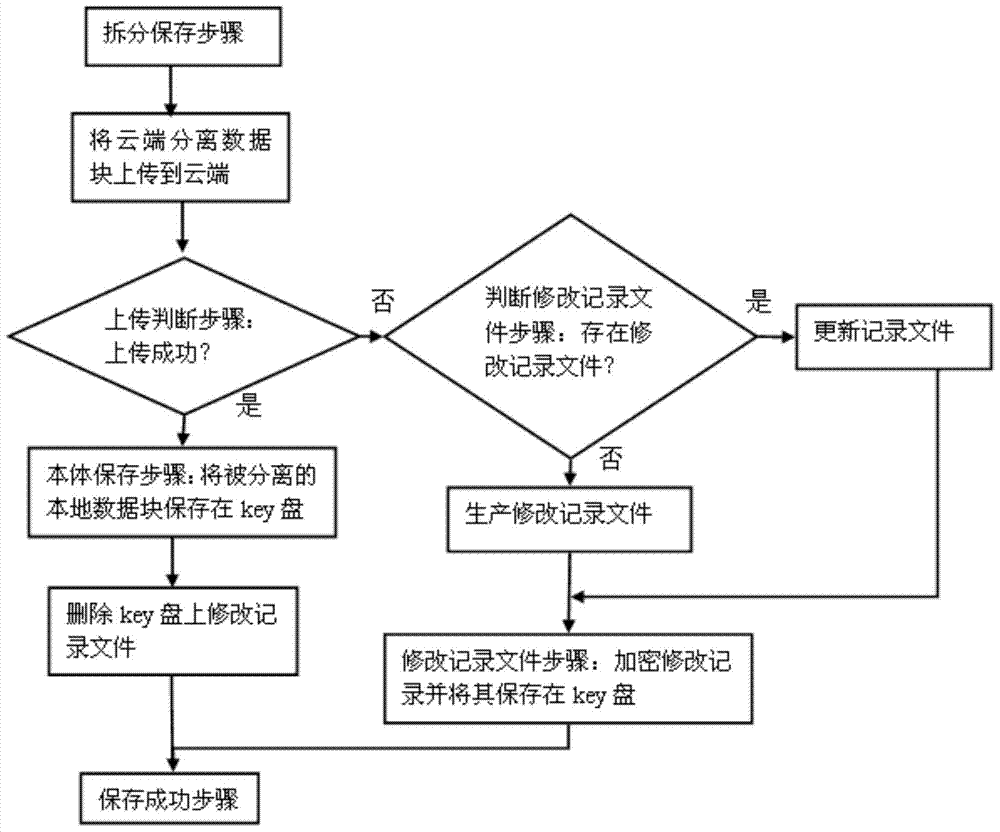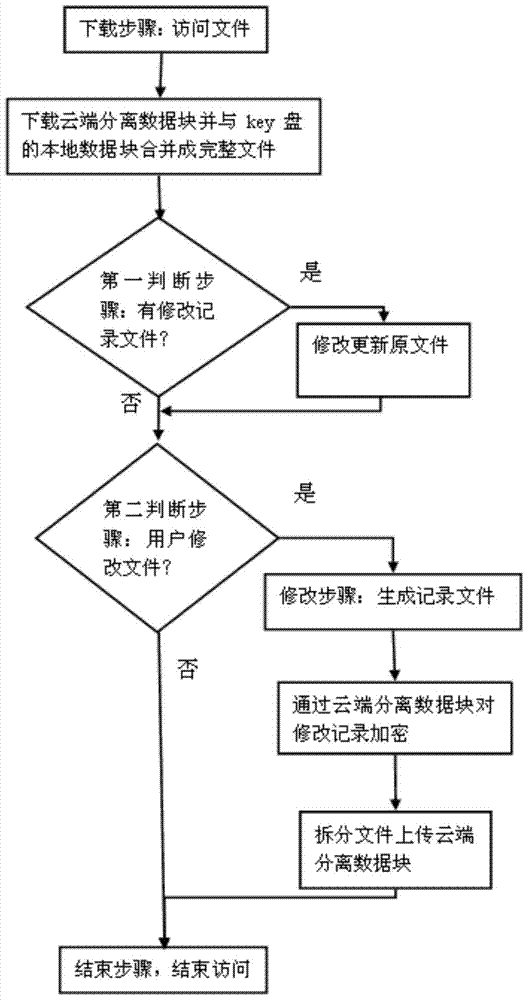A file update method for separate storage of network information
A technology of separate storage and file update, applied in electrical components, special data processing applications, program/content distribution protection, etc., can solve the problems of less confidentiality than the original file, inflexible processing, abandoning file modification and update, etc., to ensure normal Use and modification, guarantee security and flexibility, effect with little overhead
- Summary
- Abstract
- Description
- Claims
- Application Information
AI Technical Summary
Problems solved by technology
Method used
Image
Examples
Embodiment 1
[0040] Such as figure 1 As shown, this example provides a file update method for separate storage of network information, including the following steps:
[0041] The step of splitting and saving is splitting the files to be updated and saved into local data blocks and cloud separation data blocks, and uploading the cloud separation data blocks to the cloud;
[0042] The upload judging step is to judge whether the cloud separation data block is successfully uploaded to the cloud, if so, jump to the local saving step, otherwise jump to the judging and modifying record file step;
[0043] The local saving step is to store the separated local data block in the key disk, delete the existing modification record file on the key disk, and jump to the step of saving successfully;
[0044] Judging the step of modifying the record file, judging whether there is a modification record file, if so, updating the modification record file and jumping to the step of modifying the record file, ot...
Embodiment 2
[0057] On the basis of embodiment 1, the modified record file described in this example is a newly added file independent of the local data block file on the key disk; in the described modified record file step, the process of encrypting the modified record is: by encrypting Algorithm or data transformation algorithm, using the currently unmodified cloud-separated data block and the current modification record as input to perform encryption or data transformation operations to generate a new encrypted modification record, and then store the encrypted modification record in the modification record of the key disk in the form of a file In the file; the modification record file is established as a separate file for each original file, or the modification record files of all the original files are stored in any one of a file, database or data source in an overall unified form. In a data storage space; the modification record includes the incremental modification information of the ...
Embodiment 3
[0072] On the basis of Embodiment 1 or Embodiment 2, in this example, the file is split and stored separately on the cloud and the key disk, and the changes made by the user to the file are stored in the incremental modification information file to specifically generate the incremental The way to modify the information record is: first, divide the source file into several small blocks on average, for example, each block is 512 bytes, and the last data block may be smaller than this 512 bytes, and then calculate the checksum for each data block, Store in the hash table; take the first data block of the modification record file, that is, from 1 byte to the 512th byte, quickly calculate the check value through rolling check and look it up in the hash table, where rolling check uses The most important is the adler-32 algorithm invented by Mark Adler. This verification method has the characteristic that the subsequent verification value of the data block can be efficiently calculate...
PUM
 Login to View More
Login to View More Abstract
Description
Claims
Application Information
 Login to View More
Login to View More - R&D
- Intellectual Property
- Life Sciences
- Materials
- Tech Scout
- Unparalleled Data Quality
- Higher Quality Content
- 60% Fewer Hallucinations
Browse by: Latest US Patents, China's latest patents, Technical Efficacy Thesaurus, Application Domain, Technology Topic, Popular Technical Reports.
© 2025 PatSnap. All rights reserved.Legal|Privacy policy|Modern Slavery Act Transparency Statement|Sitemap|About US| Contact US: help@patsnap.com



